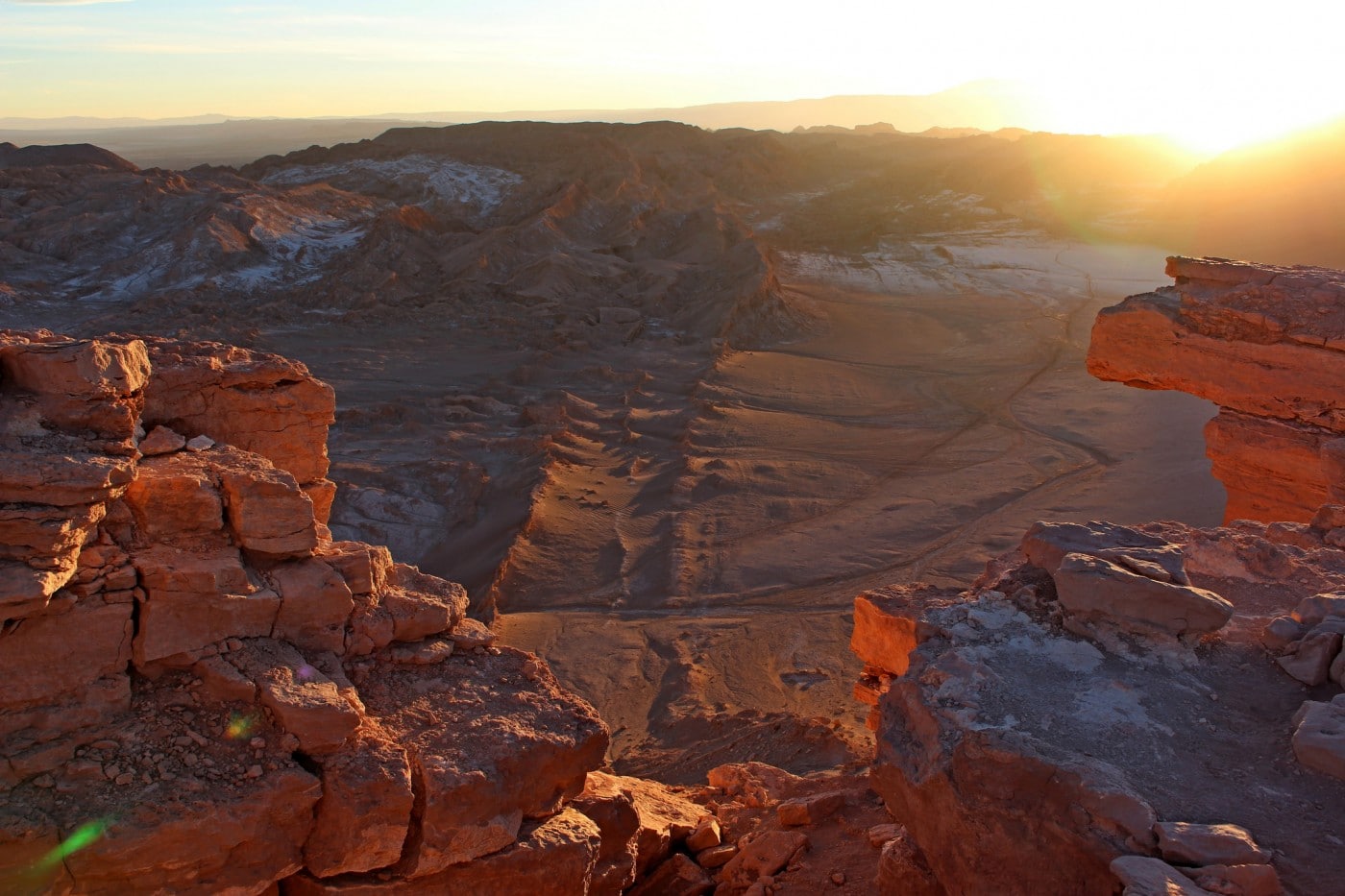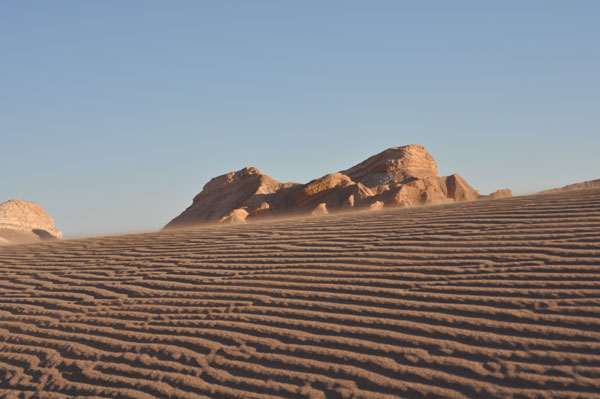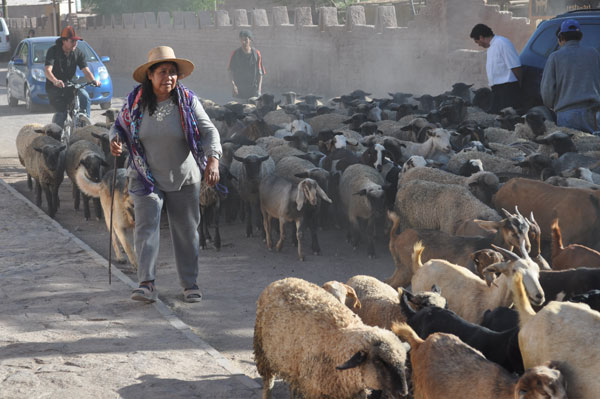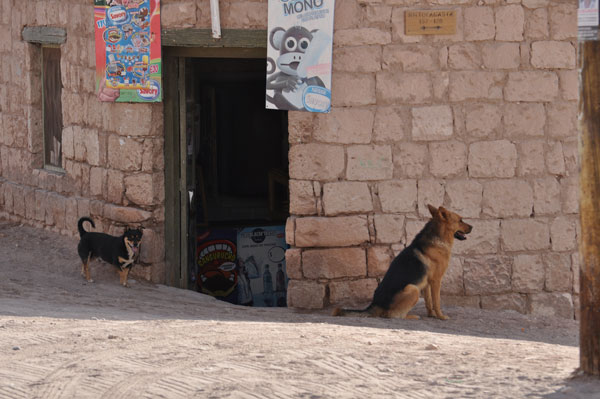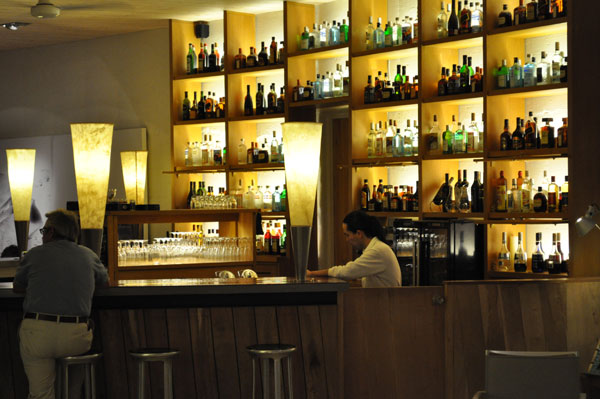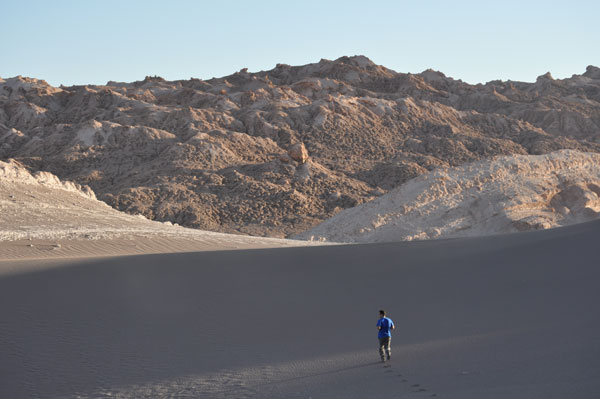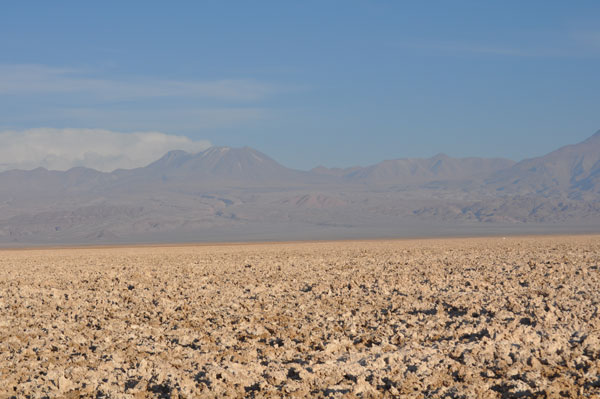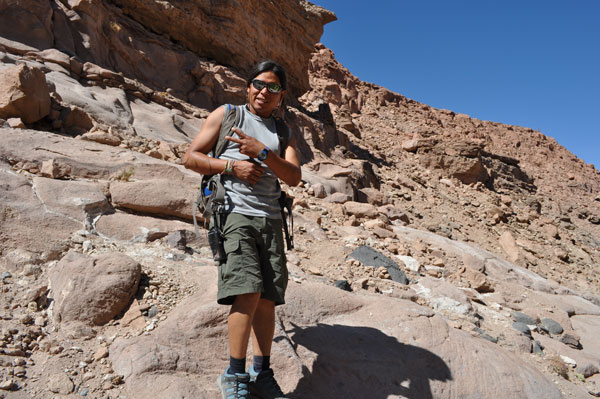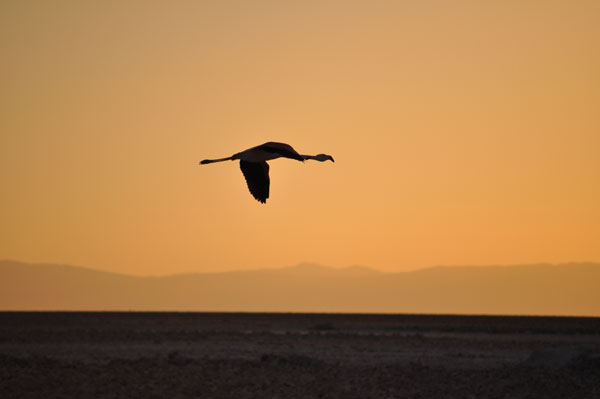Walking on The Moon – the Atacama Desert
Mars? The moon? The end of the earth? Those were the first three things that popped into my head the moment I touched down in Calama, Chile. It didn’t matter how much planning and researching I‘d done, nothing prepared me for the next four days in the Atacama Desert, the world’s driest desert. Okay, I admit I have little interest in science but I think a little inside info is needed here to geographically explain The Atacama Desert before describing this incredible experience. In Ricky Ricardo’s famous words, maybe “I got some ‘splanin’ to do.”
The Atacama Desert is actually a plateau in northern Chile that covers about 600 miles and is one of the few deserts on Earth that doesn’t receive any rain, being blocked on both sides of the Andes Mountains. This means it’s dry as a bone and some weather stations have reported not a single drop. The area is so dry that mountains that reach 22,000 feet are totally free of glaciers and some riverbeds have been dry for over 120,000 years. Parts of the desert receive a marine fog that provides enough moisture for the limited growth of some algae and a few cacti, but the majority is composed of a soil that that has been compared to what is found on Mars. In fact, because it looks so terrestrial, it’s been used by Hollywood for filming scenes set on Mars.
As a result of these atmospheric conditions and the fact that there is a scarcity of living creatures there, NASA has set up a station in the middle of it and feels that by studying the few living organisms, they can create strategies for studying life on Mars and other planets. When I reviewed the photos for this story, it seemed as if I wasn’t on this planet.
Unlike Mars, human life does exist in the tiny town of San Pedro de Atacama where the majority of the population (about 25,000) lives. The locals refer to this down as San Perro de Atacama (“dog” in Spanish) since there must be 10 dogs roaming the town for every human. The surrounding land houses copper deposits and the largest natural supply of sodium nitrate so many of the locals work in mining towns. Worldwide attention recently focused on these towns when 33 miners became trapped in a copper and gold mine and after their rescue the Atacama Desert was on the map.
So, how did I find myself here surrounded by hundreds of dogs in a Martian playground? The answer is easy: I wanted some adventure with a little luxury thrown in the mix. There are a handful of all inclusive hotels that visit the major sites, and I chose to work with Explora. Explora is perfect for someone looking for a rugged and challenging day with a hot shower, a five star meal and a delicious glass of wine by nightfall. Incredibly unpretentious, the hotel has just 50 comfortable guest rooms with crisp linens and panoramic views of the mountain range. Wooden boardwalks surround the property which has riding stables, four sparkling pools, orchards, stargazing platforms, and the main lodge, home to a library, a chic bar and restaurant and the Explorer’s Room.
Upon arrival, guests are provided with reusable water bottles and directed to the watering station where about 8 large glass vats are filled daily with purified water. The water in this region isn’t drinkable as it contains trace amounts of arsenic, so Explora does a fabulous job of providing fresh water for each guest (not to mention the entire property offers filtered water). Each night before dinner, guests meet with their guide in the Explorer’s Room to decide on the next day’s activities. A presentation is given nightly, and as I looked at each guest hovering over the altitude maps and assessing how well he or she had acclimated, I felt like I was on a Nat Geo documentary taking stock of my own physical capabilities. Explora hosts a staff of 20 multilingual guides and excursions are provided for all activity levels from simple car rides to climbing to the largest peaks at 32,000 feet.
The day is structured with an option of either two excursions (one in the morning, lunch at the hotel, then another in the afternoon), or one longer excursion each day. For the day-long excursion, all you need to do is a show up on time. Explora takes care of absolutely everything from providing transportation via their private vans, horses, or bikes, to bringing fresh towels, drinking water, picnic lunches, and libations. Explora fosters an environment suitable for both solo and group travelers and by the end of my four-day trip I had made great friends with travelers from all over the world.
I decided to break up a stay of four days with excursions that covered as much of the desert as possible while being outside. On the first day, I joined the group headed to Valle de la Luna or the Valley of the Moon which is more or less the “poster child” of the Atacama Desert. The valley is a depression surrounded by salt-encrusted hills, with a massive dune running between the two ridges. We were informed that we’d be able to literally hear the rocks cracking in the valley, however, nothing prepares you for the trek along a sandy, steep ascent in the middle of nowhere, without a sound to be heard. You quickly realize exactly what the guides meant when they told you not to worry if you “hear the great rocks cracking.”
The second day I was more ambitious and decided to venture to the Laguna Sejar, partaking in a 3 hour hike up the lagoons which was incredible. With the adrenaline rushing through my veins I felt a little like Neil Armstrong setting foot on the moon. Nothing prepares you for the experience of hiking through this amazing landscape. At times it was hard to believe I was still on planet Earth. When we finally reached the Laguna Cejar it almost looked like a mirage. The emerald lagoon contains more salt and lithium than the Dead Sea so it’s almost impossible not to float in the water.
Being fond of horseback riding I wanted to experience it here but hadn’t been on a horse in 20 years. Explora does a fantastic job of assessing the rider’s ability before allowing them to lead a horse over the barren landscape. Fortunately, much like riding a bike, I was able to recall the skills I’d learned and was told I could stray from the rest of the group one on one with my guide when he felt I was ready. He finally turned to me and said in Spanish, “galopar?” I knew immediately that he was asking me if I was ready to break away so I gave my horse a slight kick, loosened up on the reins, and felt like I was Lawrence of Arabia. I broke out in a full-out gallop riding into the sunset in a cloud of sand. Enjoying some delicious Chilean wine over dinner, I couldn’t help but be thankful for all those years of riding lessons that gave me the freedom to go beyond the others.
After a four course meal and some pisco sours later, a small group of us decided to awake at 4am to view a lunar eclipse that was going to occur. Because of the high altitude, crystal clear night sky, dry air, and lack of pollution, Atacama is one of the best places in the world for astronomical observations. Explora has its own stargazing platform with state of the art telescopes that let me see more stars than I’ve ever seen in my life as well as view the lunar eclipse with the naked eye. The brave guides were up at 3am setting everything up and even hosted a brief educational seminar. Could I ever again take a “traditional” vacation?
On the last day I decided to bike along the Salar de Atacama (the Salt Flat), afternoon in San Pedro and end with an evening at the National Flamingo Reserve. The Salar is a 62 mile mineralized lake completely covered by salt and dust where again, floating is standard, due to the incredible amounts of salt and lithium. Although I already mentioned that there’s virtually no wildlife in the desert, The National Flamingo Reserve is home to three of the six types of flamingos. It felt so bizarre gazing at thousands of flamingos amongst these salt lakes spread across this arid place. Our guide explained to us that each night at sunset the flamingos “do their dance”, flying overhead from one salt lake where they spend their day to the second lake where they spend their evening, protected from predators. To be in one of the most desolate places on earth watching a breathtaking sunset is a gift but adding 1500 flamingos to the mix is something else again. As I watched the sun slowly set behind the mountains, I felt an inner peace and tranquility, roused only by Van Morrison’s “Moon Dance” on the iPod back in the van.
The country code for Chile is 55.
Where to Stay:
Hotel Explora Atacama: For those who have a different definition of “roughing it.” This all-inclusive hotel, is the perfect hotel for anyone who just wants to “show up” and let the hotel take care of everything else from the minute you touch down in Calama. Domingo Atienza s/n. 1-866-750-6699. www.explora.com
Hotel Kimal: Great central location that offers relaxation after a full day of exploring the Atacama desert. All rooms have incredible skylights and most have small sitting areas outside. Domingo Atienza 452. 55/851152. www.kimal.cl
La Aldea: “Chic adobe” hotel built out of stone with adobe walls and a thatch roof. Located 10 minutes outside town, and owned by two architects who take pride in the design of their hotel. This quaint hotel only consists of 9 rooms and 3 spacious cabanas. Ckilapana 69-B. 55/851149.www.hotelaldea.cl
Where to Eat:
Adobe: This is the coziest place to enjoy a great dinner in San Pedro. A blazing bonfire underneath a thatch roof takes the main stage with wooden tables surrounding it. Dishes are served “a lo pobre” style (enough to feed a starving man) with large portions of beef or chicken served atop french fries and topped with a fried egg (calorie counting is not an option when visiting Chile!). For the less ambitious eater, fresh pizzas served right from a wood burning oven are also a highlight. Live music nightly starting at 9pm. Caracoles 211. 55/851132. www.cafeadobe.cl
Restaurant Blanco: A simple, minimalist environment (as the name describes) is the perfect complement to simple, delicious Chilean cuisine. They are known for their oven-baked lamb and fresh caught Easter Island Tuna. Their wine list is one of the best in San Pedro. Caracoles 195. 55/851939. www.blancorestaurant.cl
Café Tierra: If you tire of the local Chilean cuisine and are in the mood for something a little healthier, Café Tierra is your spot. The restaurant is known for its whole grain empanadas and fresh made sandwiches. Breakfast is a special experience here with daily baked fresh bread and juice and fresh brewed (and strong) coffee. Caracoles 271. 55/851585
What to See:
Spending time in a local town is a must. If you drive about 15-20 minutes outside of downtown San Pedro, you can really get a feeling for how the locals live. To see llamas roaming the streets, children playing in a playground and the local church plus shop at the local grocery store is an experience you will never forget. I will forever cherish the memory of seeing my first llama named “Michael Jackson” in the town of Puente Tocona.

